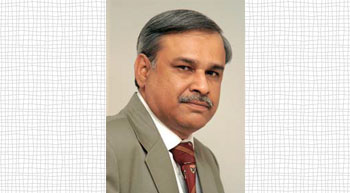Many of us know that the celebrated economist John Maynard Keynes famously said that (in times of slowdown) the government should pay people to dig holes in the ground and then fill them up, which has been widely interpreted to mean digging up existing roads and then resurfacing them. This apparently absurd proposition, designed to put money in peoples´ pockets, has been for long propounded as the foremost case that has ever been made for infrastructure-building during recessions. If Keynes was in India today, he would not have asked governments to bother about the digging part of the job, because we specialise in building roads that develop ditches in six months, throwing up the classical Keynesian opportunity of reconstruction all the way, all the time.
It is not known if our dynamic Minister of Road Transport and Highways is a follower of this brand of economics. But what is known by now, and is visible, is the evangelical zeal with which the Minister, Mr Gadkari, has pushed road building in a year that has been otherwise quite lacklustre. Without going immediately into the projects and initiatives launched by his ministry, let us first look at the most critical outcome. The speed of construction of highways in our country, measured in km/day, has markedly gone up from 11.6 in 2013/14, to 22 (extrapolated/ projected) in the current year. This is impressive by any standards, and would not have happened without a well-planned thrust.
The government had inherited a very tough situation in the road sector, largely due to failure of the erstwhile PPP model. Taking off initially with the help of plain vanilla EPC contracts to gain initial momentum, the ministry and the government followed through with several well-meaning initiatives like the tweaked Hybrid Annuity Model, relaxations for divestments of private players in completed projects, improvements in dispute resolution mechanisms, etc., all of which contributed to progress. But the efforts were not limited to only improving the models/processes. There were moves in parallel to conceptualise and announce newer road projects and hike investments for this sector. Take for example the elegant project called the National Highway Grid. The grid will finally have 27 horizontal and vertical highways across the country. These routes, that will crisscross and connect with each other, will be evenly spaced at a distance of 250 km each. The grid will connect 12 major ports, 26 state capitals and more than 45 cities, and is expected to be 36,000 km long if we added it all up. All these highways will be four-lane expressways. The existing 11,300 kilometres of single and two-lane corridors will also be converted to four-lane roads. This whole project is estimated to cost around Rs.25,000 crore.
Then there is the interesting project for improvement of ports and hinterland infrastructure which has been named Sagarmala. As part of this project, several additional projects have been taken up for detailed project report preparation, which include 58 road projects and 23 rail connectivity projects. However, my favourite is the Pradhan Mantri Gram Sadak Yojana. Although this project has been running since the year 2000, the achievements are staggering – since its inception, PMGSY has provided connectivity of over 4,66,044 km (including upgradation of 1,67,977 km of existing roads) ù at an aggregate cost of Rs.1,41,822 crore as on January 2016. And this is a really inclusive initiative insofar as this touches the lives of our rural folk. All in all, a lot of roads are being built in our country, thus throwing up huge opportunities for developers and contracting companies. We may only hope that all these roads that we are creating today, will break away from our Indian traditions and be considerably well-built such that even Mr Keynes or his representative would need to do some difficult and diligent digging.



Leave a Reply
You must be logged in to post a comment.